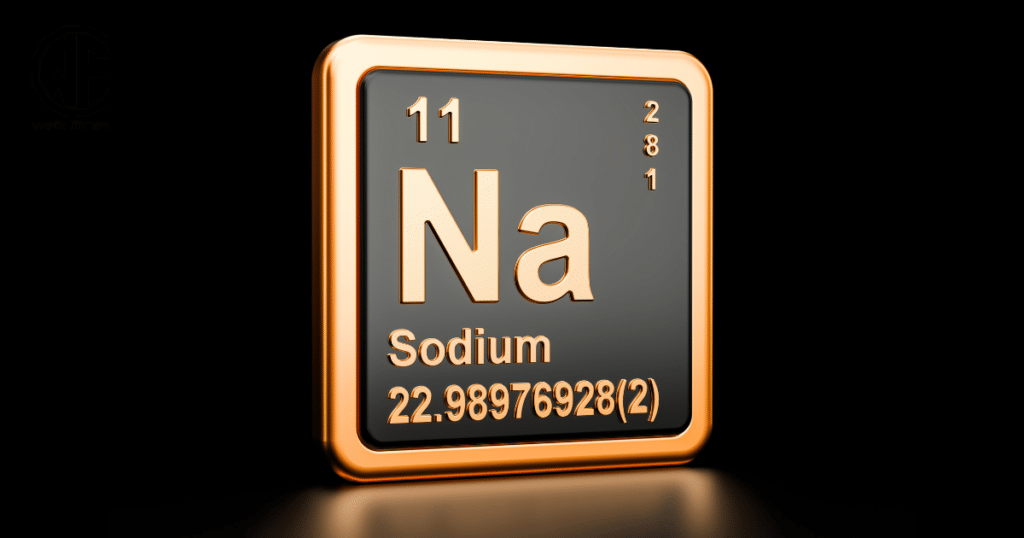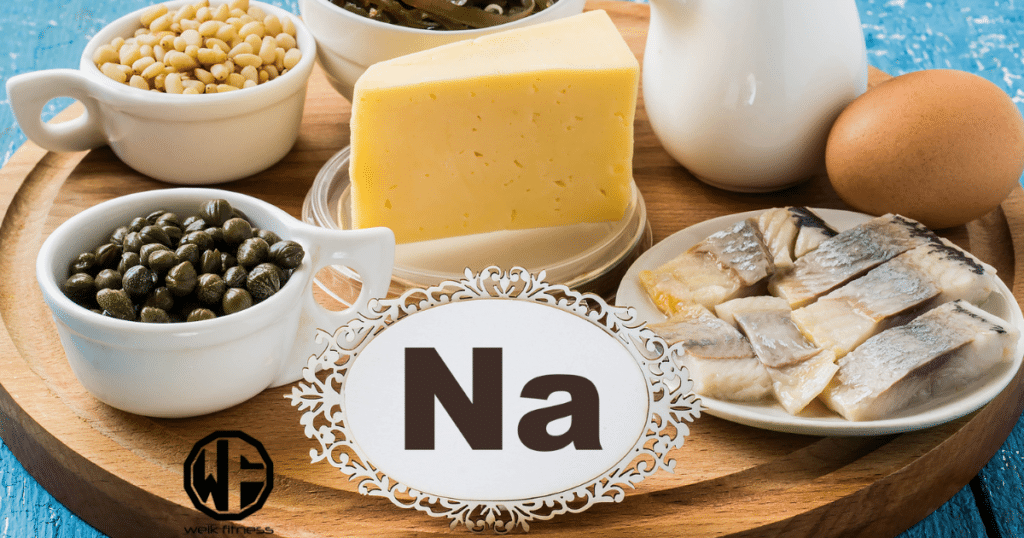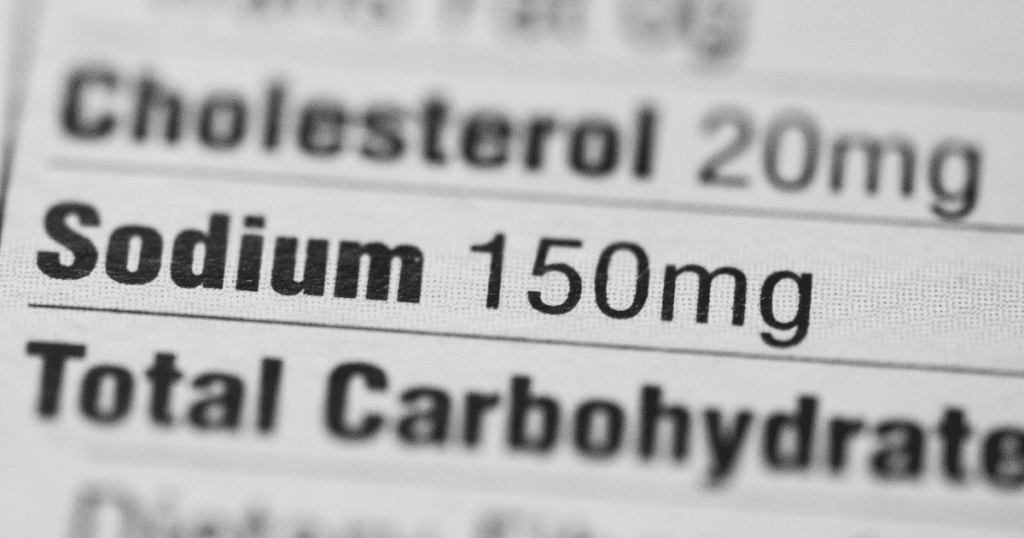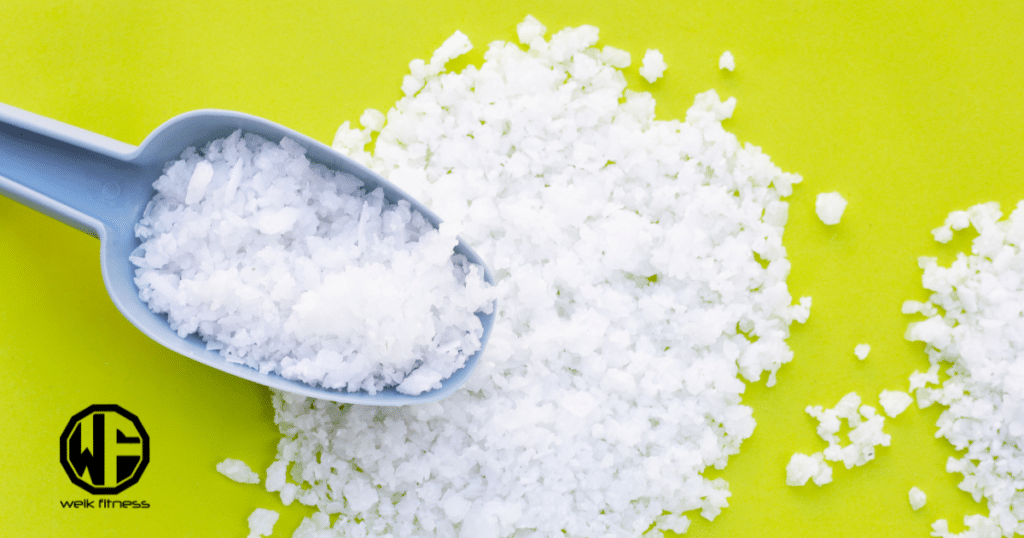Sodium in Food Isn’t the Devil You Think It Is
As the years go by, more and more nutrition and diet myths become debunked. Remember when fat was supposedly “bad” for you and would make you fat? Then all of a sudden there was a change and the use of fats was actually beneficial for health and fitness. This ingredient would cause cancer. That ingredient would give you cancer. Heck, if you did enough Googling, just about everything would give you cancer it seems. Well, sodium in food, unfortunately, received the same bad rap. Now, let’s first throw a disclaimer out there… if you suffer from high blood pressure or any illness/disease where you need to reduce your sodium intake for medical reasons, please adhere to your doctor’s advice. While I wouldn’t mind being a doctor, I am not and don’t pretend to be.
For many starting their health and fitness journey, they listen to just about any piece of advice they can get their hands on. They aren’t sure where to start so they Google anything and everything in an attempt to wrap their arms around what they should be doing. Before you know it, someone has you patting your head and rubbing your tummy simultaneously in order for health benefits.
As for sodium in food, it was said that it can cause health problems. And while this is somewhat true, it’s reckless to deem it completely bad for your health and something you should limit or eliminate from your diet. Sodium in food actually has many health benefits and serves important functions within the body to aid with everyday functioning. Yet, as with everything, too much of a good thing is never a good thing. Even drinking too much water can kill you. And no, I’m not making that up.
Disclaimer: This article is for informational purposes only and is not meant to treat or diagnose any condition. It is recommended that you speak with your doctor before starting any exercise program, changing your daily nutrition, or adding any supplements to your regimen.
Table of contents

What is Sodium?
Sodium is a chemical element with the symbol Na and atomic number 11. It is a highly reactive alkali metal found in Group 1 of the periodic table. Sodium is a soft, silvery-white, and highly malleable metal at room temperature, but it is never found in its pure form in nature because it reacts vigorously with water and oxygen.
Here are some key characteristics and information about sodium:
- Reactivity: Sodium is extremely reactive, especially with water. When it comes into contact with water, it reacts vigorously, producing sodium hydroxide (NaOH) and hydrogen gas (H2). This reaction is exothermic and can result in the release of heat and sometimes even sparks or flames.
- Occurrence: Sodium is one of the most abundant elements on Earth and is commonly found in compounds, especially as sodium chloride (NaCl), which is table salt. It is also found in various minerals and in seawater.
- Importance: Sodium is an essential element for living organisms. It plays a crucial role in various biological processes, including nerve impulse transmission, muscle contractions, and the regulation of fluid balance in the body.
- Industrial Uses: Sodium has numerous industrial applications. Sodium compounds are used in the manufacture of chemicals, soaps, detergents, and glass. Sodium vapor lamps are also used in street lighting.
- Health Considerations: Sodium intake is a dietary concern for humans. Excessive consumption of sodium, often in the form of salt, can contribute to health problems such as high blood pressure and cardiovascular disease. Therefore, it’s important to monitor and limit sodium intake in one’s diet.
- Safety Precautions: Due to its extreme reactivity with water and air, sodium is typically stored in a moisture-free environment, often under a layer of mineral oil or other inert substances, to prevent accidental reactions. Handling sodium requires precautions to avoid contact with moisture and oxygen.
In summary, sodium is an important chemical element with a wide range of applications in industry and biology. Its reactivity with water and air makes it a fascinating element with unique properties, but also one that requires careful handling and storage.
Sodium in Food: Which Foods Are the Highest?

Sodium is a common component of many foods, and its consumption can have a significant impact on your overall sodium intake. While some sodium in food and your diet is necessary for bodily functions, excessive sodium in food can be harmful and is associated with health issues like high blood pressure, heart disease, and stroke. Therefore, it’s essential to be aware of which foods are the highest in sodium and to monitor your sodium intake.
Below are some food categories and specific examples of high-sodium foods:
- Processed and Packaged Foods: Many processed and packaged foods are high in sodium due to added salt for flavor and preservation. Some examples include:
- Canned soups and broths
- Frozen dinners and microwaveable meals
- Processed meats like bacon, ham, and sausages
- Potato chips, pretzels, and other salty snacks
- Canned vegetables and beans (unless labeled as low-sodium)
- Condiments like ketchup, soy sauce, and salad dressings
- Fast Food and Restaurant Meals: Fast food and restaurant meals are often high in sodium, as they frequently use salt and sodium-containing ingredients for flavor. Common high-sodium items include:
- Burgers and fries
- Pizza
- Fried chicken and chicken nuggets
- Sandwiches and subs
- Chinese takeout dishes
- Deli Meats and Cheese: Deli meats (cold cuts) and certain types of cheese can be high in sodium. Check labels for lower-sodium alternatives or choose fresh, unprocessed options when possible.
- Bakery Items: Some baked goods, such as bread, rolls, and bagels, can contain significant amounts of sodium. Check labels and consider lower-sodium bread options.
- Canned and Pickled Foods: Canned vegetables, pickles, olives, and other pickled products are often preserved with salt, making them high in sodium.
- Cereals and Instant Oatmeal: Certain breakfast cereals and instant oatmeal packets may contain added sodium. Look for lower-sodium cereal options and plain oatmeal without added flavorings.
- Sauces and Seasonings: Many sauces and seasonings are high in sodium. This includes soy sauce, teriyaki sauce, barbecue sauce, and many spice blends. Opt for reduced-sodium versions or use herbs and spices to season your food instead.

To reduce your sodium intake, consider the following tips:
- Read food labels to check for sodium content.
- Choose fresh, whole foods over processed and packaged ones.
- Cook at home using fresh ingredients, so you have more control over the amount of salt in your meals.
- When eating out, ask for dishes with reduced salt or have sauces and dressings served on the side.
- Experiment with herbs, spices, and other flavorings to season your food without relying on salt.
Remember that dietary sodium guidelines can vary depending on individual health conditions and recommendations from healthcare providers. It’s essential to be aware of your specific dietary needs and consult with a healthcare professional if you have concerns about your sodium intake and the amount of sodium in food.
The Bad News About Sodium in Food

Let’s first start with some negatives of sodium in food to get them out of the way. Sodium in food can be harmful to those over the age of 50, as well as people with diabetes and/or high blood pressure1. Not you? Perfect, then you’re going to want to pay attention to the rest of this article. And don’t skip to the end, there are no cliff notes.
Related Article: Fix Your Water Retention Issues with These Tips
When the body contains too much sodium, it causes water retention which can lead to an increased pressure within the blood vessels as well as a strain on the heart. This can lead to hypertension as well as cardiovascular disease and can even cause a heart attack or stroke if it isn’t controlled. It’s the job of the kidneys to help filter sodium in the body, and when it can no longer keep up with the volume of sodium in the blood is when health issues arise.
Here’s an example for you. If you are fairly lean, have you ever gone to a Chinese Buffet? You know, the good ones! What happens shortly after leaving the buffet to head home? You look in the mirror and see a puffer fish, right? That’s what too much sodium can do for you. It can cause extreme bloating.
The Good News About Sodium in Food

Sodium in food is an essential electrolyte. It aids with bodily functions such as enzyme operations as well as helping regulate muscular contractions which are extremely important when it comes to exercise and getting your “swole” on. Another role of sodium in food is to regulate fluids in the body.
When we exercise, we excrete sweat which contains sodium — some people also excrete odor, but I’m not here to judge. When sodium and water in the body aren’t replaced, it can cause dehydration which can lead to muscle cramping. In addition, once levels of sodium in the brain are compromised, it can reduce brain function and cause you to become lethargic and confused.
If you watch someone who is outside on a hot day (take an athlete for example) and becomes dehydrated, they will generally become extremely tired and won’t be able to think clearly. If the individual generally doesn’t think clearly, to begin with, imagine what the next step would be. When this happens, water and electrolytes are needed immediately. It’s for this reason that athletes and those who exercise should always be drinking water and some type of electrolyte mixture when they are sweating excessively to replace these vital nutrients in the body.
Brain
In terms of brain health, the tissue of the brain utilizes glucose to maintain proper functioning — as does the meathead in the gym eating Sour Patch Kids to fuel his workout. Sodium in food has the ability to help the cells of the body absorb glucose and utilize it by transporting it throughout the body. The brain is very particular to changes in sodium levels, so for that reason, it is important to be taking in enough sodium each day to keep it functioning optimally. And who couldn’t use a little help in that department?
Carbon Dioxide
Through everyday functioning, carbon dioxide is produced. Sodium in food has the ability to remove excess carbon dioxide in the body. This allows for richer and more oxygenated blood circulating through the body and out to working muscles.
Blood Pressure
Managing blood pressure is extremely important. Hypertension is known as the “silent killer” because it can be present without someone knowing they have it or showing any signs of symptoms. If blood pressure remains high over a long period of time and isn’t controlled, it can lead to heart failure as well as kidney failure — both of which can cause a life-threatening situation. Not good.

Healthy blood pressure according to the American Heart Association (AHA) is 120/802. There are then multiple levels of “high blood pressure.” These are considered:
- Hypertension Stage 1: 130-139 / 80-89
- Hypertension Stage 2: 140+ / 90+
- Hypertension Crisis: 180+ / 120+
*If you check your blood pressure and it is within the hypertension ranges set above, it is advised that you go see your doctor as soon as possible.
How Much Sodium is Recommended in Our Diet?
The American Heart Association (AHA) recommends that we take in less than 1,500mg of sodium each day (according to a 2,000-calorie diet). They also mentioned that the average American is taking in an average of 3,400mg daily3. Any more sodium in the diet and you’d think they hung a salt lick around their neck. If you were following a “low sodium” diet (first off, shame on you), you’re going to want to change your mindset and not be afraid of sodium in food — it’s not the devil you think it is as you can see from this article. The nice thing about following a flexible dieting lifestyle is that nothing is truly “off limits” in terms of what you can or cannot eat. Some common foods that contain sodium to consider adding to your diet could be:
- Meat
- Cold Cuts
- Carrots
- Celery
- Beets
- Spinach
You could even toss in some pizza or sandwiches if you wanted. Don’t be fooled into old nutritional myths. I want to give you the best information available so you can live a long and healthy life. Adding sodium to your foods or consuming foods with sodium in them are not bad for your health — only when overconsumed. So, don’t shy away from this extremely important electrolyte.
Sources:
- Harvard. https://www.hsph.harvard.edu/nutritionsource/salt-and-sodium/sodium-health-risks-and-disease/
- American Heart Association. http://www.heart.org/HEARTORG/Conditions/HighBloodPressure/GettheFactsAboutHighBloodPressure/The-Facts-About-High-Blood-Pressure_UCM_002050_Article.jsp#.WlZEVkxFxPY
- American Heart Association infographic. https://healthyforgood.heart.org/eat-smart/infographics/effects-of-excess-sodium-infographic


*Disclosure: This article may contain affiliate links or ads, which means we earn a small commission at no extra cost to you if you make a purchase through these links. These commissions help support the operation and maintenance of our website, allowing us to continue producing free valuable content. Your support is genuinely appreciated, whether you choose to use our links or not. Thank you for being a part of our community and enjoying our content.
PLEASE CONSIDER SHARING THIS ON YOUR SOCIAL MEDIA TO HELP OTHERS LEARN MORE ABOUT THIS TOPIC. SIMPLY CLICK BELOW!

